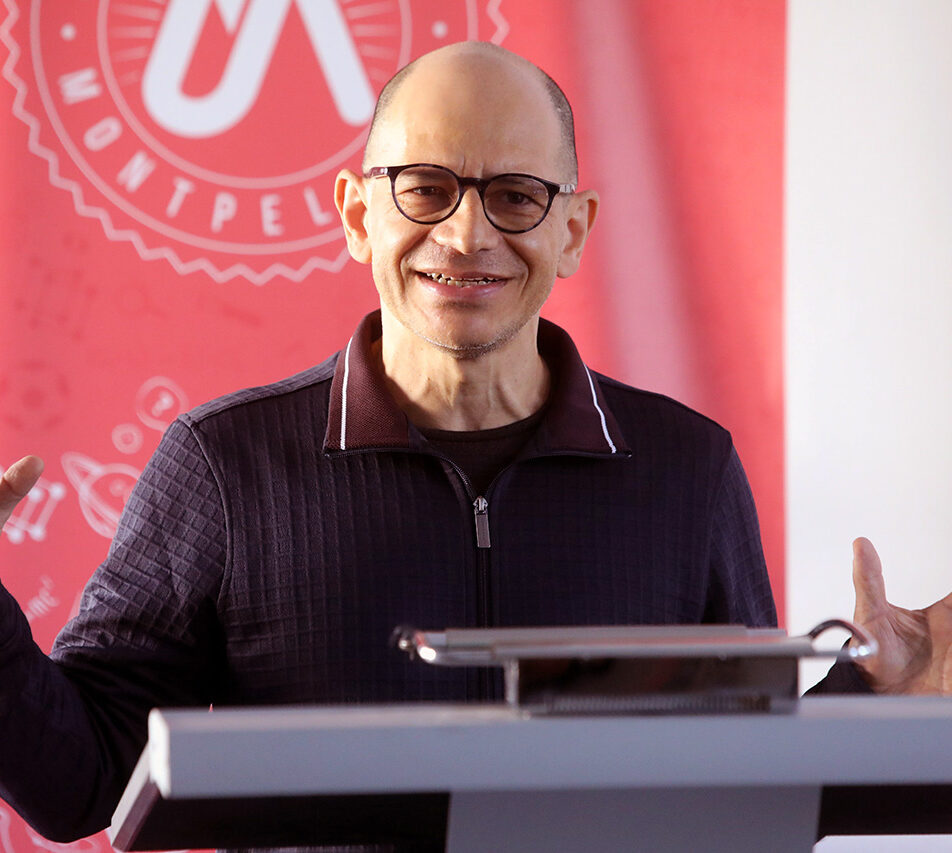Carlos Jaramillo - 120 million years for one man
A great name in paleontology, Colombian Carlos Jaramillo is a specialist in the evolution of Amazonian-Andean ecosystems over the last 120 million years. The Smithsonian Tropical Research Institute researcher explained the origin of the abundant biodiversity of this intertropical region.

The ceremony to award the title of Doctor Honoris Causa to paleobotanist Carlos Jaramillo was just like the man himself. On this April 6, 2023, there was no decorum or toga - a campus blockade obliged - but a classroom and a polo shirt. " A DIY approach that suits him well," saysISEM's Pierre-Olivier Antoine, referring to the man who is more of an adventurer than a man of the court. " Carlos Jaramillo called out to the young people blockading the campus," recalls his colleague from the University of Montpellier. And my heart goes out to you. But I need to get through." And he did get through. "
Researcher at the Smithsonian Tropical Research Institute in Panama, Carlos Jaramillo is a palynologist. Using pollen collected from the banks of the Amazon to the summits of the Andes, the 50-year-old has reconstructed the evolution of tropical American flora and landscapes over the last 120 million years. " He is the only paleontologist to cover such a long period," points out Pierre-Olivier Antoine. " His creation of a sequential table spanning more than 100 million years, which makes it possible to date and characterize an environment on the basis of a pollen assemblage, represents a colossal work of synthesis," explains the Montpellier paleontologist. Pollen makes it possible to date and sign the presence of numerous plants and thus to reconstruct ecosystems of the past, as well as to understand the evolutionary phenomena that have occurred over geological time. In his speech, Carlos Jaramillo reminded us that this knowledge will help us to understand current changes.
Nearly 40 articles in two years
Not a man of the court, but a man of the network, Carlos Jaramillo works with teams all over the world. Pierre-Olivier Antoine has been working with him since 2008. This collaboration earned the University of Montpellier the opportunity to welcome him as a visiting professor in September 2019. The invitation will ultimately last for two years, the difficult period at Covid having prompted the Colombian to extend his stay in France. During these two years, the "hyperactive" - as his colleagues call him - published almost 40 scientific articles, of which he is the sole signatory for the UM. "Philippe Augé, President of the UM, thanked him at the ceremony: " He has thus played a full and voluntary part in the international influence of the university in the field of ecology-evolution. In one of his publications, to be published in Science in April 2021, the specialist in the evolution of Amazonian-Andean ecosystems shows that the profound crisis at the Cretaceous-Tertiary boundary (which led to the near-extinction of the dinosaurs) is at the origin of the region's current biodiversity. The flora, dominated by conifers in the Cretaceous, was largely decimated, only to be reconstituted over the following millions of years in favor of a new, hitherto marginal plant kingdom, the angiosperms.
Flair
At ISEM, Carlos Jaramillo has won unanimous acclaim. " Carlos talks to everyone, takes part in all the seminars and willingly shares his thoughts ", confides Pierre-Olivier Antoine, a fan who can't help but contrast the Colombian researcher's conviviality with his difficulties in extending his residence permit: " He came very close to being undocumented ". These skills are also invaluable in the field, where collecting samples in sometimes tense socio-political contexts requires gaining the trust of local populations. " In the field, people immediately identify with us. With Carlos, I've never had a problem," says Pierre-Olivier Antoine. He adds: " Carlos also has a flair for spotting in difficult conditions where the samples will contain the markers we're looking for. An invaluable talent for teams setting off on missions over 10,000 km from their laboratories, with the risk of returning empty-handed. Carlos Jaramillo's major discoveries include the largest snake ever identified, Titanoboa, measuring 14 metres in length. Fortunately, this titan became extinct... 60 million years ago!
